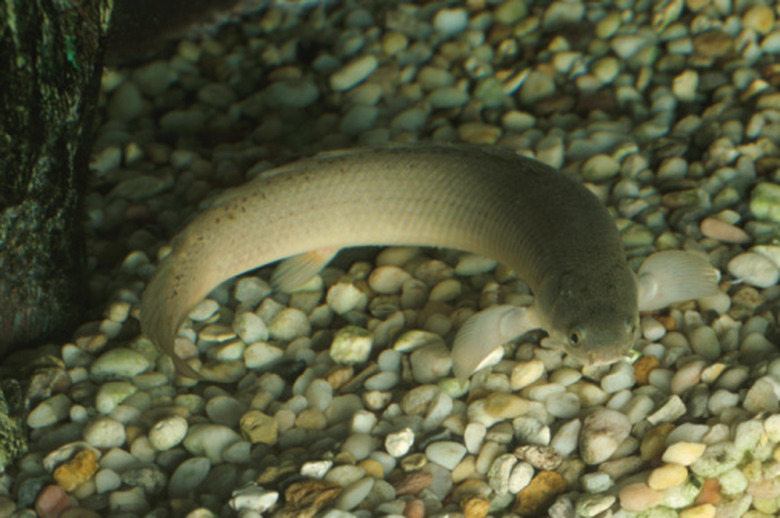How To Hook Up A Hawkeye 201 Aquarium Filter
Things Needed
-
Hawkeye 201 filter
-
Aquarium of the same base dimension as the Hawkeye 201 filter base
Warning
Never transfer fish rapidly into a fresh tank; the temperature of water in the natural world changes very gradually, and too quick of a transition can stress or shock your fish.
Tip
The gravel filtration works best with water changes; overcrowded tanks easily overcome the filter's ability to clean the water.
The Hawkeye 201 filter system uses an air pump and air stone in an upright plastic tube to create a suction action that pulls particulate matter into the gravel and the slotted plastic base. Air filters are one of the most common and affordable filtration options; while many air filtration systems use a carbon head to filter out chemicals, the Hawkeye 201 only uses the suction action; regular water changes as well as cleaning the gravel are a must for a healthy tank. Setting up the Hawkeye filter does not require any tools or equipment.
Tank Setup
Step 1
Connect the clear plastic tube to the slotted base.
Step 2
Place the slotted base with connected plastic tube in the bottom of the aquarium.
Step 3
Connect an aquarium air hose to the air pump.
Step 4
Connect an air stone to the other side of the tube, and run the stone down to the bottom of the tube.
Step 5
Fill your aquarium with 1-1/2 inches of gravel and add water until the aquarium is full; the water should be over the top of the tube.
Step 6
Plug in your air filter, and the Hawkeye 201 is ready. Let the aquarium sit for 24 hours before adding any fish.
Cleaning and Maintainence
Step 1
Remove the fish from the aquarium, and put them in containers filled with the same aquarium water. For a simple water change, just remove a tenth of the water, and replace it with fresh dechlorinated water. Consider using a gravel siphon to clean out the particulate matter so you don't have to transfer your fish.
Step 2
Remove and clean the air hose and air stone. If your air stone is falling apart, you can buy a replacement at most pet stores.
Step 3
Pour the aquarium into a collander, gravel and all, and remove the air filter base and tube.
Step 4
Clean the gravel, the base and the tube with hot water.
Step 5
Set the tank up again, let it sit for a few hours, and re-acclimate your fish by putting their container into the aquarium, until the water temperatures match, and then release them.
